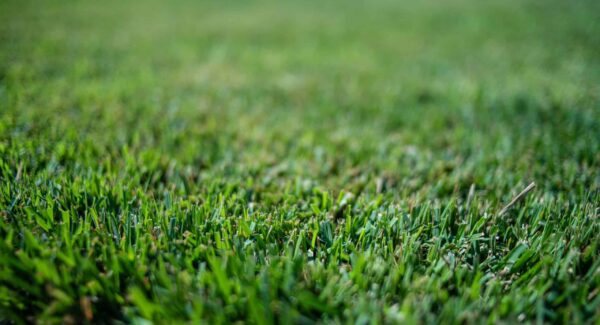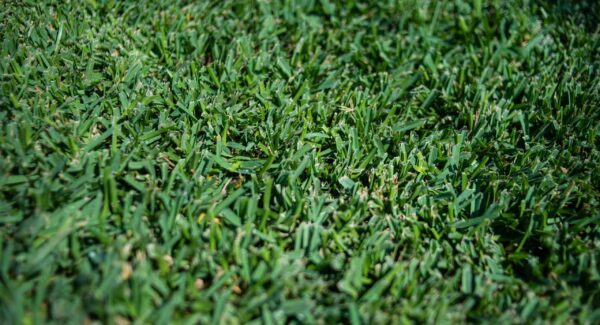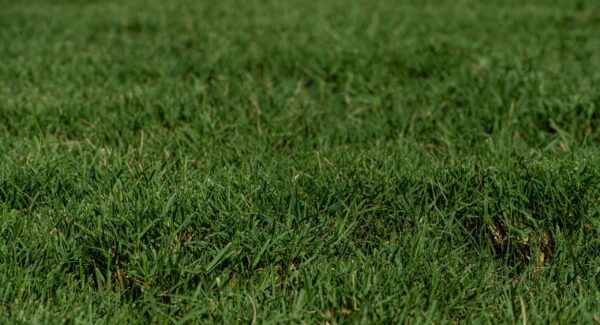Best Grass for Shade in Texas: Finding the Perfect Grass for Low-Light Areas
Finding the right grass for shady areas in Texas can be challenging since most grasses need plenty of sunlight to thrive. But if your yard has trees or shaded spots, don’t worry – there are grass varieties that can grow sufficiently with less light.
Here, we provide a guide to help you choose the best shade-tolerant grass for Texas to enjoy a green, healthy lawn even in tricky shaded areas. With the right grass and proper care, you can keep your lawn lush and vibrant, regardless of low-light conditions.
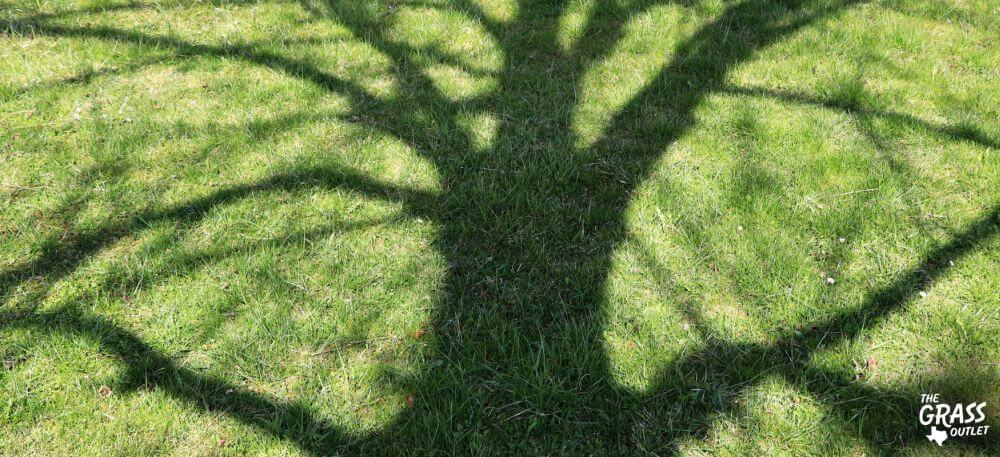
Why Shade is Challenging for Lawns in Texas
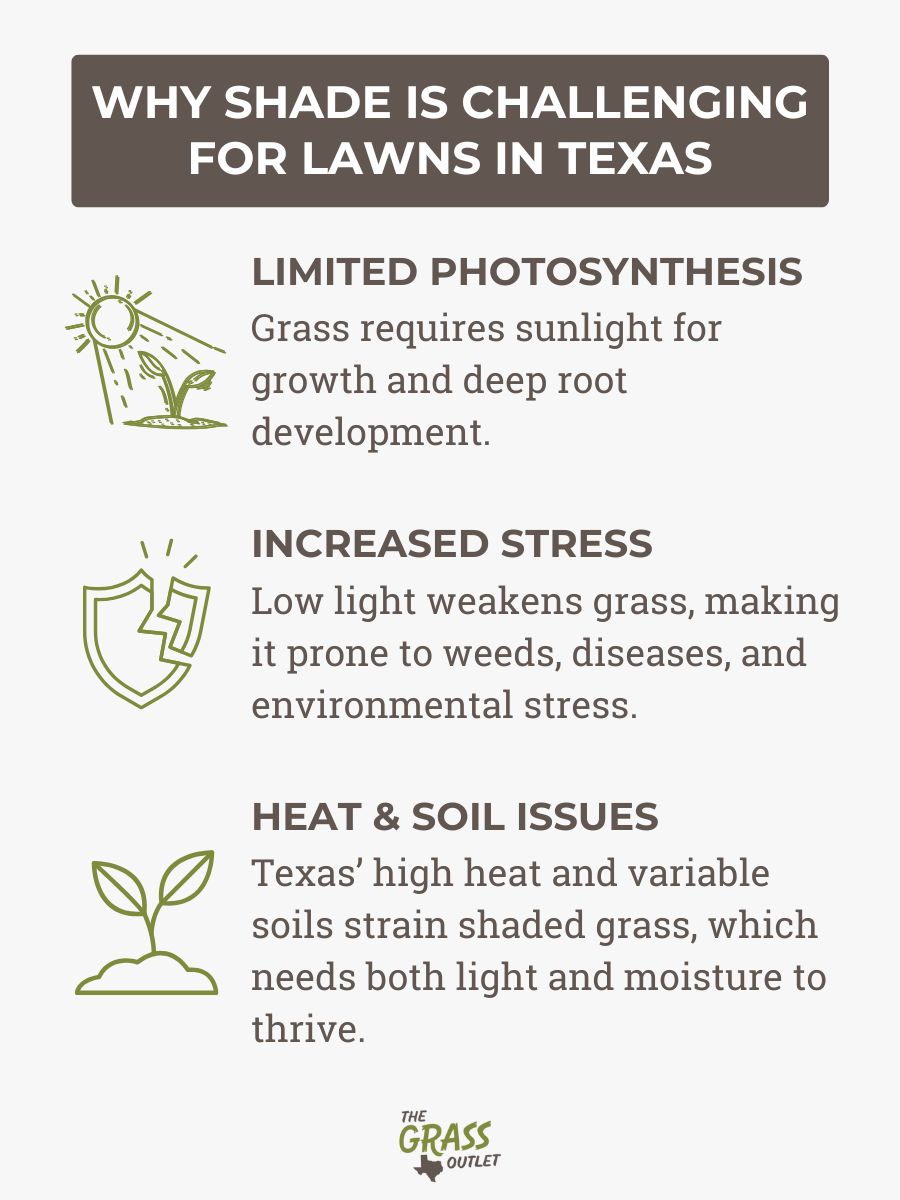
Grass relies on photosynthesis, which converts sunlight into food to support growth and develop deep roots. When shaded areas limit photosynthesis, grass cannot establish a healthy root system, making it more vulnerable to weeds and environmental stress.
Shade is particularly challenging for Texas lawns due to the region’s unique conditions, including high temperatures, variable soil types, and extensive tree canopies that cast dense shadows. Hot summers make it hard for shaded grass to compete, as it needs light and moisture to withstand the heat.
While most grasses struggle in shaded areas, some shade-tolerant varieties adapt better and can provide a lush, green solution. Observing how sunlight moves across your yard will help you choose the best shade-tolerant grass for each spot. However, although shade-tolerant grasses can survive with less light, most still require around four hours of partial sun.
Top Grass Types for Shade in Texas
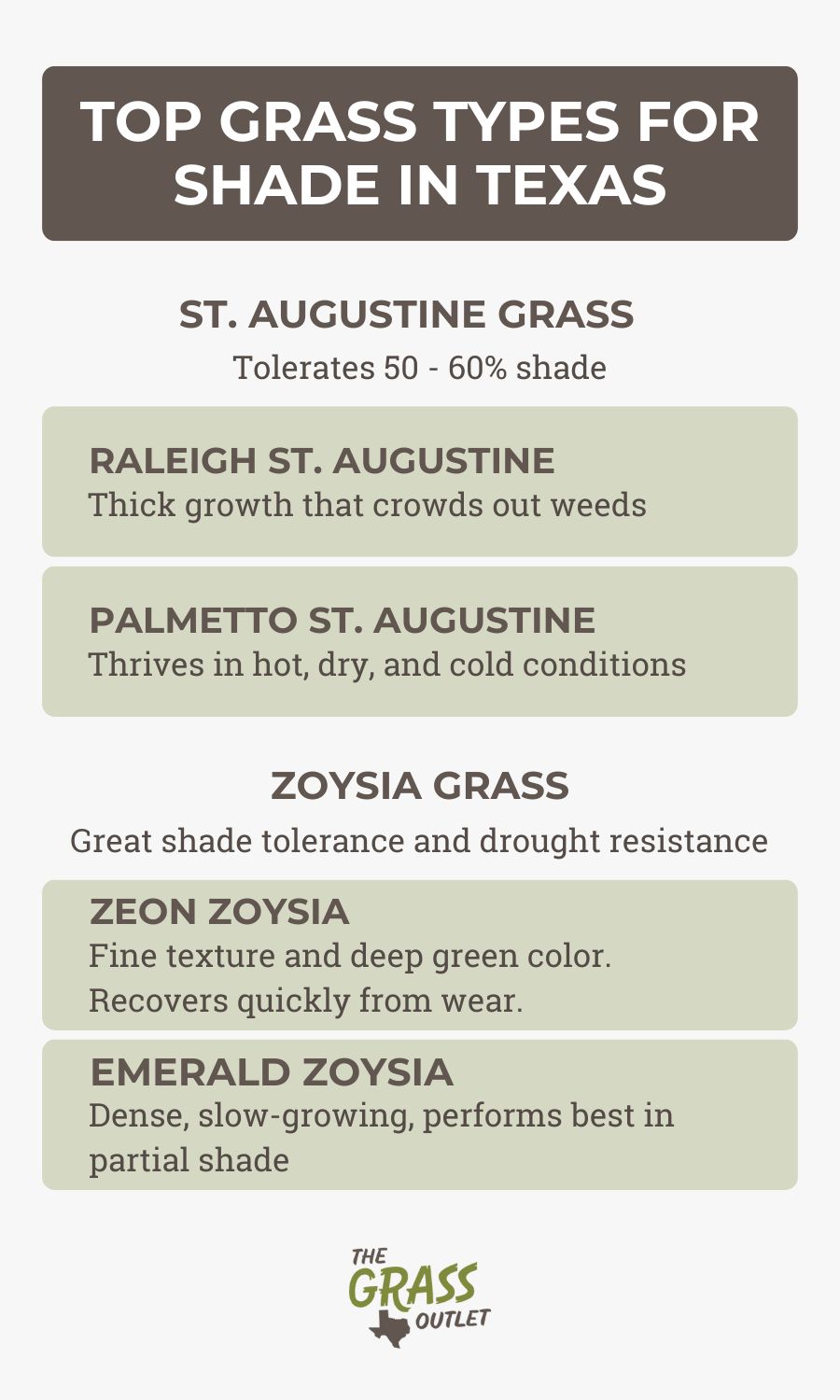
In North Texas, St. Augustine and Zoysia are the most common shade-friendly grasses.
St. Augustine grass
St. Augustine grass, known for its broad, coarse blades and deep green color, excels in shade tolerance, making it a popular choice for shaded areas in Texas landscapes. It spreads quickly, making it suitable for larger, high-traffic areas, and can handle up to 50-60% shade coverage.
For many years, Raleigh St. Augustine grass has been the most commonly used turfgrass in Texas, known for its thick growth and ability to crowd out weeds when properly watered and maintained. Effective Raleigh St. Augustine maintenance includes consistent watering, proper mowing, and fertilization to support its dense growth and weed resistance. It can grow under tree canopies, but still needs sufficient sunlight to flourish.
With a denser root system than Raleigh St. Augustine, Palmetto St. Augustine tolerates slightly more shade. Designed as an enhanced version of Raleigh St. Augustine grass, Palmetto offers improved performance in shaded areas and colder, hotter, and drier conditions. Proper Palmetto St. Augustine maintenance, including regular watering, mowing, and fertilization, is essential to maximize its shade tolerance and ensure healthy growth. While Palmetto has a higher shade tolerance, it still requires exposure to sunlight. However, both varieties are excellent choices for shady Texas landscapes.
Zoysia grass
Zoysia is particularly suited for Texas lawns due to its excellent shade tolerance and drought resistance. It handles high temperatures and shaded areas effectively, keeping its density and color even with limited sunlight.
Zoysia’s deep root system pulls moisture from lower soil levels, making it highly resilient in drought conditions. Its slow growth, efficient photosynthesis, dense leaf structure, and adaptability to low light contribute to its ability to flourish in varying light conditions.
Zoysia leaves grow upright to capture available light without shading each other, especially when mowed higher, allowing optimal sunlight absorption.
Zeon Zoysia, needing only a few hours of daily direct sun, is particularly valued for its fine texture and adaptability to Texas climates and soils. Its deep green, appealing look lasts longer into the season and greens up earlier in spring. Its robust root system competes well with shallow tree roots and recovers quickly from wear.
Thanks to their deep roots, both Zeon and Palisades Zoysia varieties have exceptional drought tolerance. Zoysia grass is slower growing than other warm-season types, which means less mowing. Its dense, creeping growth creates a thick, carpet-like appearance. Although Zoysia is shade-tolerant, it needs 3–4 hours of sun for best results, and it performs better in partial shade than in full shade.
Tips for Growing Grass in Shaded Areas
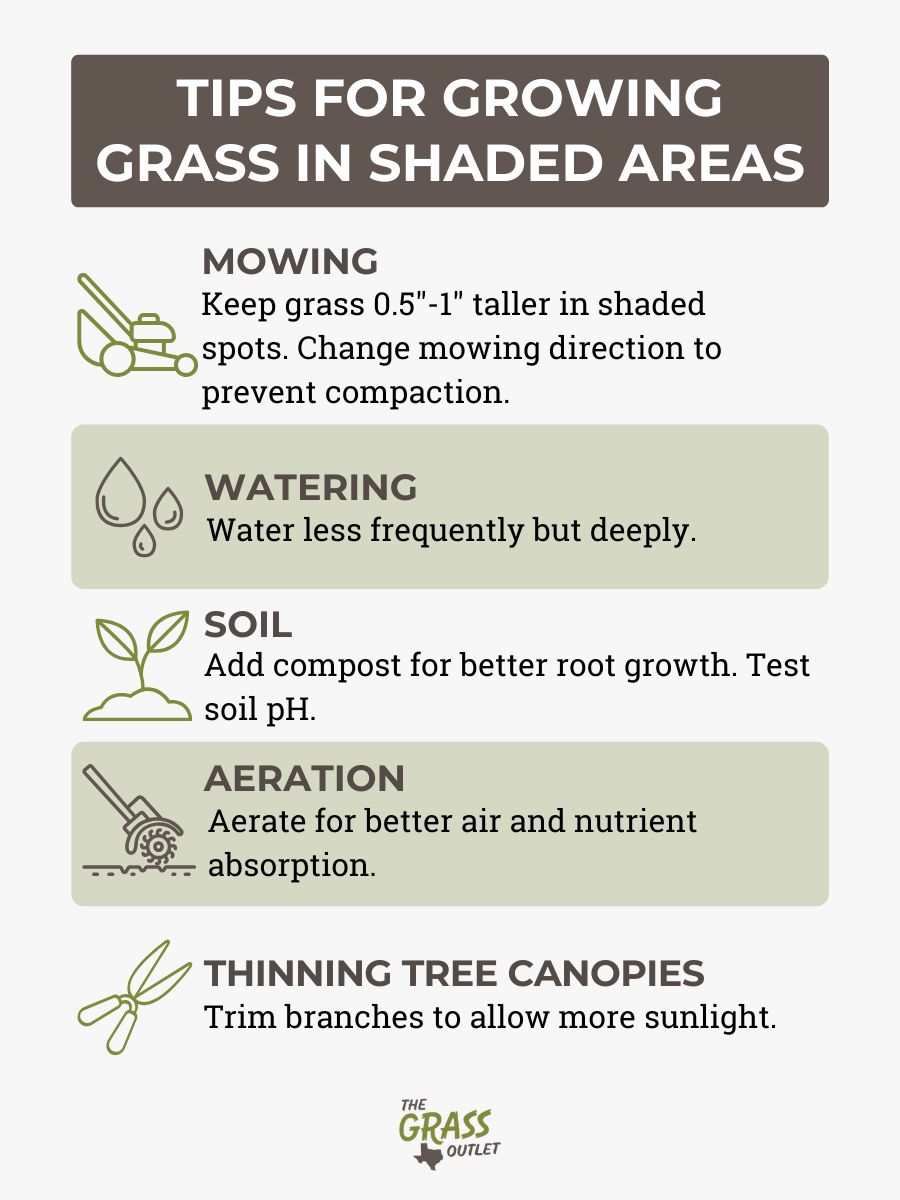
Mowing
When it comes to mowing, it’s essential to maintain a slightly longer grass height in shaded regions to improve the grass’s ability to photosynthesize. Avoid cutting the grass too short, allowing more leaf surface to absorb sunlight. In shaded areas, you should keep the grass about half an inch to an inch taller than grass in sunnier spots.
For warm-season grasses, it’s best to mow between 1 to 2.5 inches, with shaded areas closer to 2.5 inches to reduce stress on the grass. Vary your mowing direction to prevent soil compaction and lawn damage.
Watering and Irrigation
Grass growing in shaded areas typically requires less water than grass in full sun. Water deeply but less frequently to avoid soggy conditions due to poor drainage in low-light spots. Aerating the lawn monthly can help improve air circulation and nutrient absorption while aiding in water drainage.
It’s also important to note that different types of shade affect your lawn’s water needs. If a structure like a wall causes shade, the shaded grass will need less water than grass in direct sunlight, as there is less evaporation. However, if the shade is due to tall trees or vegetation, the grass will need more water since it competes with larger plants for moisture.
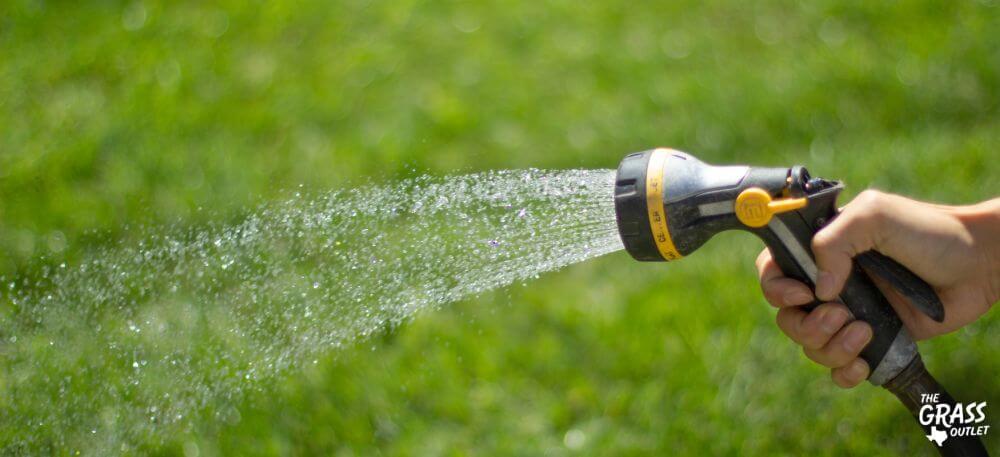
Soil Preparation
This is another critical factor for shaded areas. Enhancing the soil with organic matter, such as compost, will improve root growth and nutrient absorption. Before you amend your soil, test its pH and nutrient levels, especially in early fall. Adding a thin layer of compost—about half an inch—can boost the grass’s nutrients. Spread the compost lightly so the grass can still grow, ensuring the new grass establishes well. Regular aeration helps reduce soil compaction and improves overall soil health.
Aerate the soil
To help alleviate issues like poor drainage and compacted soil, it’s important to core aerate your lawn. Aeration involves making small holes in the ground to help air, water, and nutrients reach the grass and soil more easily. Removing the small plugs of soil allows grass roots more space to grow, improving access to both oxygen and nutrients. Experts recommend aerating turfgrass once a year, either in spring or fall. For cool-season grasses, aerate in early fall, ideally at least four weeks before the first frost, to minimize weed growth and give your lawn time to recover before the cold sets in. Aeration is best done in late spring or early summer for warm-season grasses.
Thinning Tree Canopies
If large trees shade your lawn, thinning the tree canopies can allow more sunlight to reach the grass. Consider trimming tree branches or raising the canopy to let dappled sunlight filter through the grass below.
If your yard receives little to no direct sunlight, exploring alternatives like concrete, rocks, mulch, or gravel might be better, as grass may not thrive in complete shade.
Common Challenges with Shaded Lawns in Texas
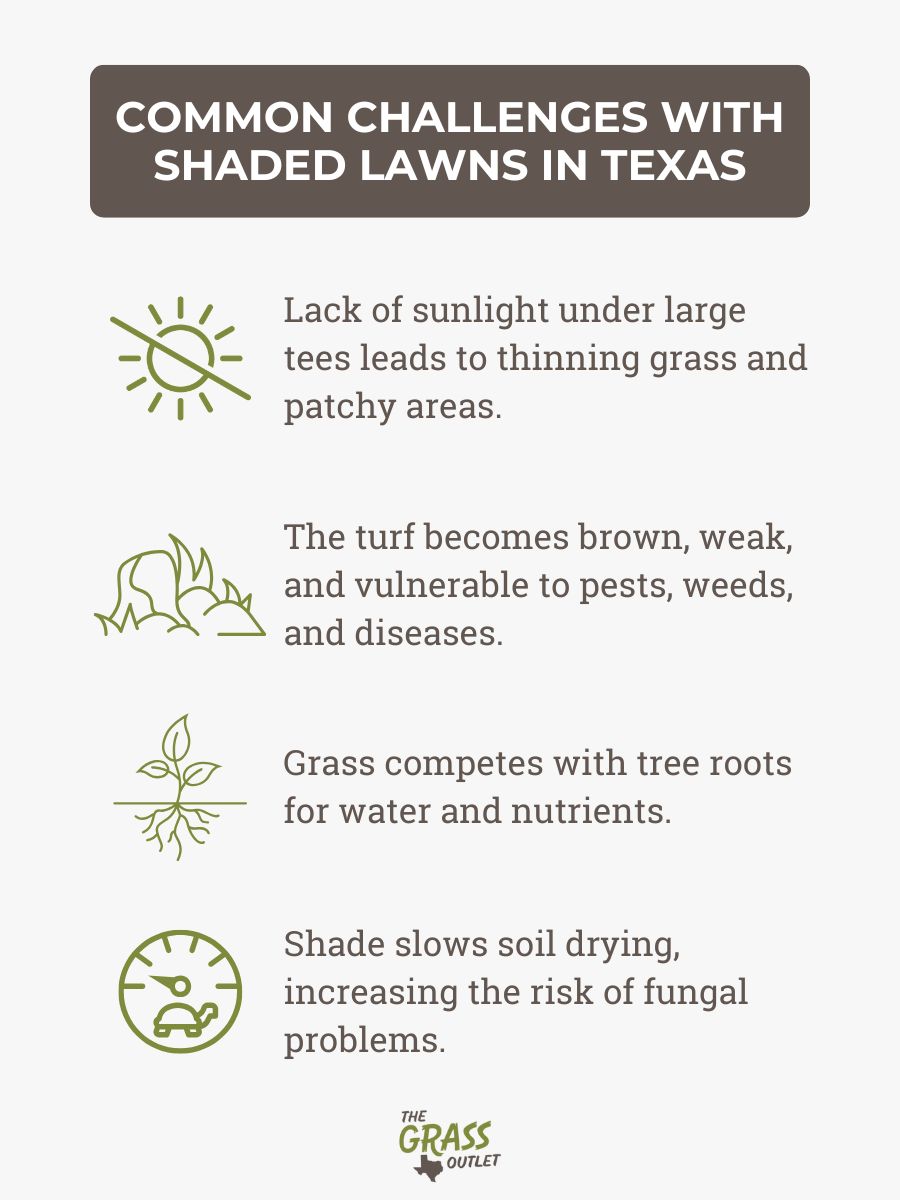
So, what are the common challenges with shaded lawns you should pay special attention to?
One is sparse growth and bare patches often appearing beneath large trees. This happens because grass in these areas doesn’t receive enough sunlight, which leads to thinning or patchy coverage.
Shade stress, or the lack of sunlight, causes the turf to become brown and weak, making it more vulnerable to infestations, weeds, and diseases. While this may seem obvious to most homeowners, any time your lawn starts to discolour, it’s a signal that something may be wrong.
For areas with bare patches, reseeding or laying down shade-tolerant sod can help rejuvenate the lawn. Following the right watering practices afterwards is essential to prevent soil becoming too soggy.
We already mentioned that grass competes with tree roots for water and nutrients in shaded areas, further weakening its ability to thrive. Aeration is beneficial in these cases, as it helps the soil absorb air, water, and nutrients more effectively. A core aerator to remove soil plugs is the best way to promote optimal aeration. Afterwards, applying a light layer of compost can further enrich the soil, helping grass recover and grow stronger. Be sure to thoroughly spread it evenly across the lawn and water to aid absorption.
Another thing to watch for in shaded lawns is increased moisture retention, which can cause fungal issues if not managed correctly. Shade slows the soil’s drying process, so it’s important not to overwater. Deep but infrequent watering helps avoid soggy conditions while encouraging more profound root growth.
Ultimately, addressing issues like these requires thoughtful care and maintenance.
Long-Term Maintenance for Shade-Tolerant Grass
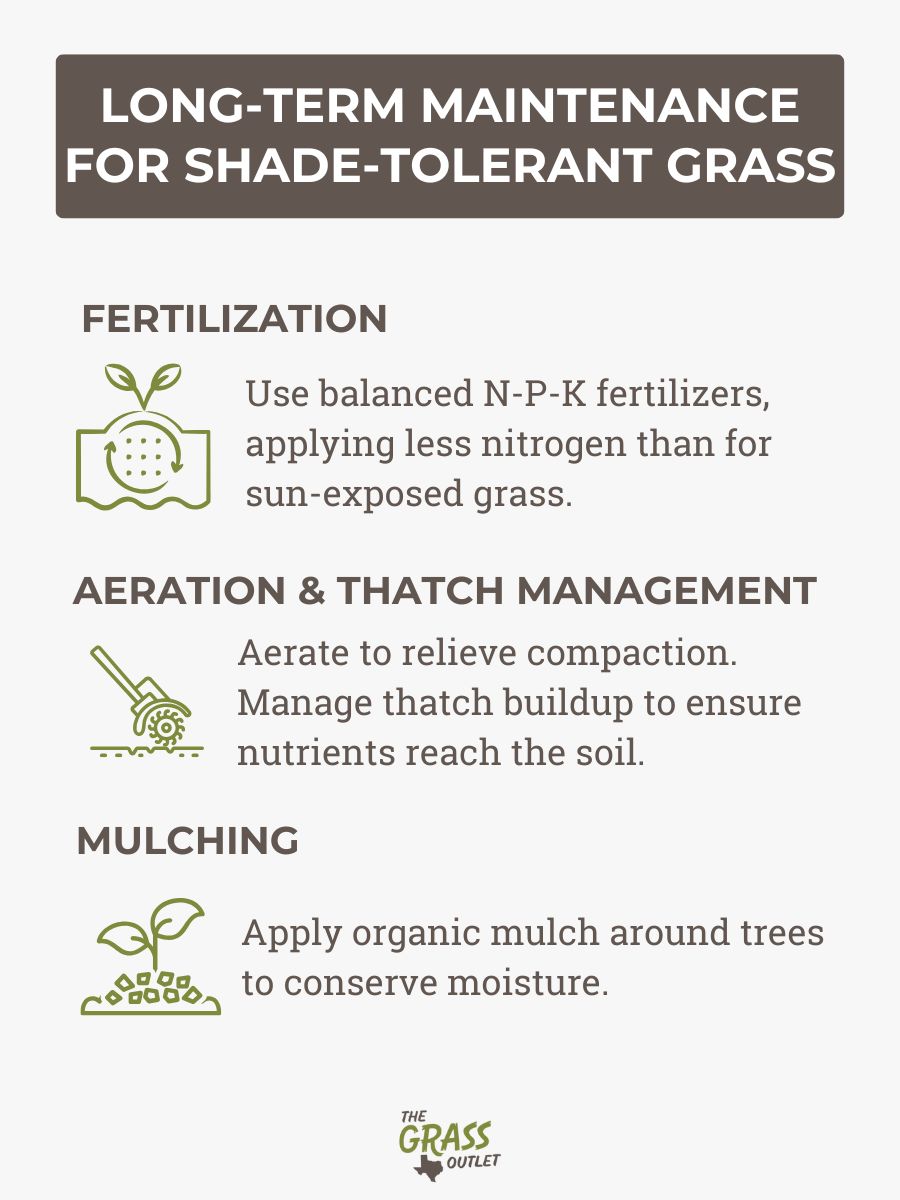
Maintaining shade-tolerant grass over the long term requires careful attention to practices such as fertilization, aeration, thatch management, or mulching.
Fertilization
Grass growing in shaded areas typically requires less fertilization than grass in full sun, but it still needs a balanced supply of nutrients to thrive. It’s important to fertilize cautiously, stopping fertilization at least one month before seeding to allow for the application of a starter fertilizer afterwards. Shade-tolerant grasses need about half as much nitrogen as their sun-exposed counterparts, so avoid high-nitrogen fertilizers. Instead, choose a fertilizer with a balanced N-P-K (nitrogen-phosphorus-potassium) ratio that suits your soil’s needs, which you can determine through soil testing.
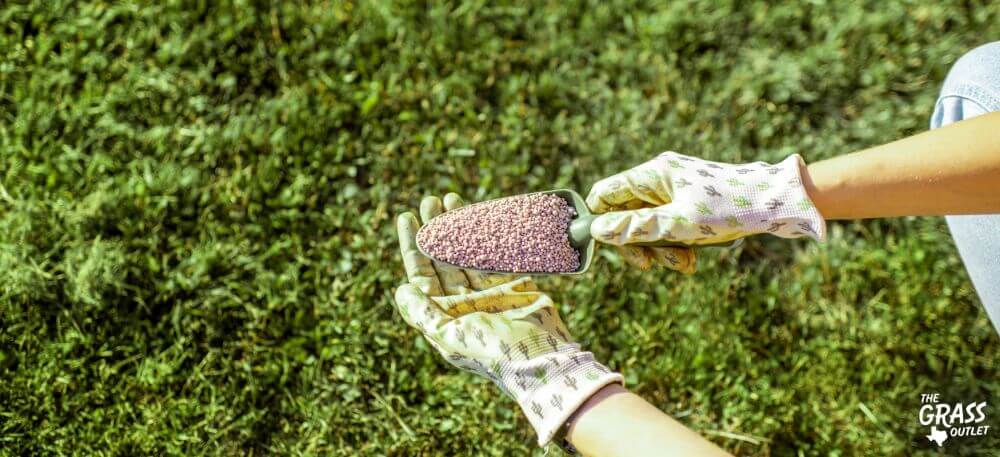
Aeration and Thatch Management
Regular aeration is crucial for grass in shaded areas to thrive, as it helps alleviate soil compaction, which can be more common under trees. Additionally, shaded lawns are often prone to thatch buildup, which can create a barrier between the soil and the grass. To combat this, aerate regularly and manage thatch buildup to improve lawn health. If thatch becomes excessive, consider using a dethatching tool to break it up.
Mulching
Organic mulch around trees and garden beds can help reduce the competition for resources like water and nutrients between trees and grass. Mulching conserves soil moisture and improves the health of the soil, allowing shade-tolerant grasses to access the resources they need without having to compete as aggressively with tree roots. This practice helps the grass and enhances the overall landscape by maintaining soil health and reducing stress on the trees and the lawn.
Conclusion
Choosing suitable shade-tolerant grass is a critical first step for any outdoor project, especially in Texas, where conditions vary greatly. While all grass types require sunlight to thrive, certain varieties like St. Augustine or Zoysia stand out for their ability to perform well with limited light.
Homeowners should select a grass variety that matches their specific climate and level of shade to ensure long-term success. The Grass Outlet can help guide you in making the right choice and offers high-quality sod to suit any shaded lawn in Texas.
